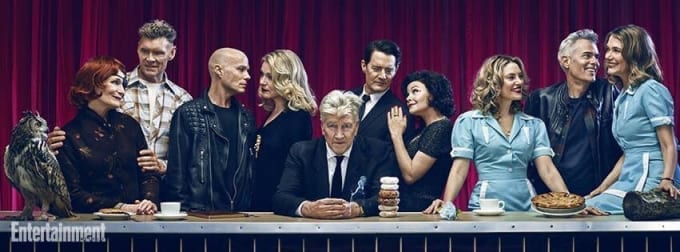Content Warning: This article discusses rape, drug use, and murder, as depicted in the film.
It is rather easy to draw a several-fold parallel between Firefly and Twin Peaks. Both series made peculiar use of traditional genre conventions. Both were hindered by television executives and met an early end. And, despite their short span in their timeslots, both series achieved a cult following. The loyalty and passion of their respective fanbases practically dwarfs that of programs with a higher budget and a lifespan too long for their quality. Alas, such is the bitter, rueful world of television. Behind the make believe, there may be a suit ready to pull the plug. And thus, the fantasy ends: the crew fades into the cold darkness of space, and the hero wanders the unknown forevermore.
But that’s not how the story ends. For one suit that did not believe, at least a thousand viewers did. And the creators are not unkind. Therefore, we got Serenity, a grand close to the series; the Firefly finale that we didn’t get. In this case, amongst laughter, cold sweat, and vales of tears, we got a send-off to our beloved crew.
Although we did get a Twin Peaks film after the series’ cancellation, the parallel distorts a bit here. The 1992 prequel film Fire Walk With Me didn’t get as good a reception as Joss Whedon’s Serenity did. Some of it might have had to do with the perception of David Lynch as an auteur with a highly distinctive signature. Some considered his aesthetic choices to be self-indulgent to the point of mindless obscenity. Others felt the disclosure of events dull and unengaging.
Perhaps, the film’s marketing as a traditional horror did it a disservice.
While some decried the film as rubbish, others found a whole lot to praise. This is not a matter of conflicted assessments, but of critical re-evaluation and context. Nothing is without flaws, but to observe this particular film in isolation is to forego the point of it all. It’s a narrative meant to evoke the future with tragic resonance. Its oddities were far more than some appeal to an aesthetic signature. It’s an effort to break down the walls to which we clung for safety. Through the film, the oddities in the series becomes fathomlessly monstrous. Years after, the intent and heart of the film become apparent. It’s a bid at redemption.
To put it plainly. It’s a look at who Laura Palmer truly was. Before, the dark was such for its incomprehensibility. Now, the dark is such for its sheer horror. The very living presence of Laura Palmer rings with impending doom. Her words and interactions inevitably conjure words from a tremulous otherness. This week, we’ll end our look into the second half of David Lynch and Mark Frost’s brainchild. It’s not part of the second season per se. As a prequel film, we’ll be looking at the truth behind the mystique that enthralled a generation.
Spoilers ahead…
Fire Walk With Me
One Year Prior: Pursuing the Blue Rose
This is absolutely not a film to approach without first knowing the series’ conflict, turns, and ending. But beware, the tone is rather different. From the very title card, we get a much different feel than the program’s introduction. We find no idyllic, sleepy landscapes pertaining to the frontier town. Instead, we get our opening credits displayed over a watery blue background, as if alluding to Laura’s ultimate fate. The camera pans out as the familiar names and a few new intriguing ones fade out, revealing the background to be static on a television screen. This, and Angelo Badalamenti’s score convey a sensation of chaos and despair. The relative silence of the introduction shatters near immediately with a young woman’s scream.
This is a prelude to the murder of 17 year old Teresa Banks. FBI Special Agent Cooper alluded to this all the way back in the Pilot when identifying the murderer’s calling card. Early on, David Lynch himself chews the scene (magnificently loud as usual) through his reprisal of FBI Regional Bureau Chief Gordon Cole. He has agents Chester Desmond (Chris Isaak) and Sam Stanley (Kiefer Sutherland) work Teresa Banks’ case. These two are a comparatively straight-faced duo, but they don’t lack the competence or creativity of the series’ Dale Cooper. Actually, the contrast between heartthrob Desmond and young awkward prodigy Stanley fits the tone and needs of the investigation well. As opposed to Twin Peaks, Deer Meadow poses a much different atmosphere.
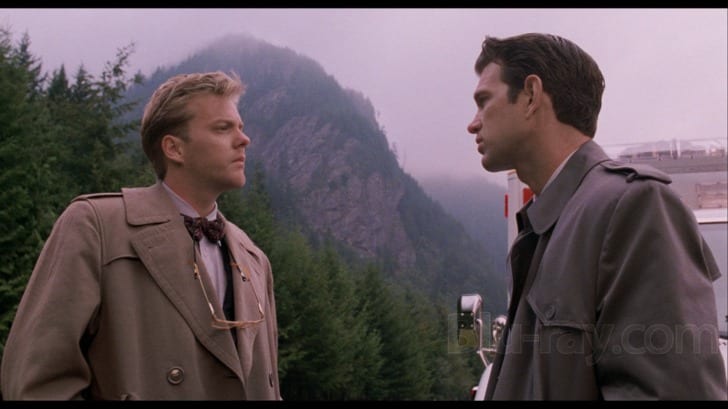
Whereas the frontier town received an outsider with kindness, this place is as sour as it gets. Accordingly, the process of the investigation is full of hindrances, particularly on behalf of the local police force. Also, going off Cole’s peculiar briefing, there may be way more to this case than apparent. Things not meant for the eyes and ears of young Sam Stanley. Now, for the investigation proper…
Teresa Banks’ lifeless body is remarkably different to Laura’s. Even now, the contrast between the film and the series’ styles is notable. Whereas Laura’s body looked almost peaceful, Teresa’s expression is frozen agape, devoid of all mystique. There is no love at work in the scene, only a definite halt to all organic processes but decomposition.
She worked the night shift at the local diner. Nobody claimed the body, either friends or relatives. She died from repeated blows to the head with a blunt object. Stanley is quick to figure that she wore a ring, but no such thing is amongst her personal effects. They find a small piece of paper beneath one of her fingernails with the letter T. There’s our killer’s calling card, alright. A visit at her former workplace reveals that she may have been a cocaine user.
Later on, they investigate the Fat Trout Trailer Park, where Teresa used to live. Several noteworthy things ensue here. They find a picture of Teresa wearing the missing ring. They get a taste of fucking awful coffee and catch sight of a strange woman who wandered into the trailer. It is here we get our first taste of that peculiar sense of inexplicable wrongness cast into the mundane. From here on, the narrative changes as Stanley takes Teresa’s body back to Portland for further analysis. Desmond stays behind to continue investigating the trailer park. As a contrast to the methodical CSI-like tone we had going on, the atmosphere starts becoming oppressive.
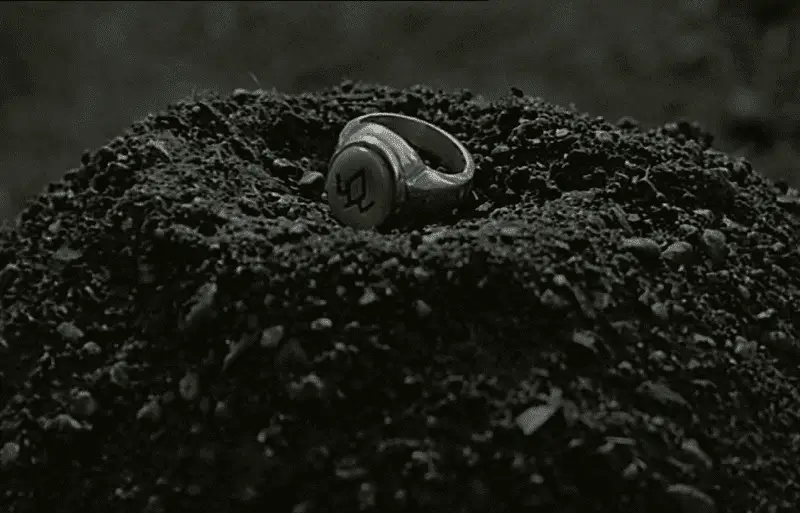
It grows late on Deer Meadow. Dusk falls as FBI Agent Chester Desmond continues searching on his own. Soon enough, he finds Teresa’s ring under another trailer belonging to the Chalfonts. Thus, we get our first call-back into the diegetic future. Mrs. Chalfont is actually Mrs. Tremond, and she partook of one of the strangest moments in the series. She was one who told Donna to speak to Harold Smith when investigating Laura’s death. Furthermore, we get a close look at the sign on the ring. It’s a symbol associated with the Black Lodge/White Lodge. The scene fades to black, and Desmond’s fate is left in uncertainty.
Meanwhile in Philadelphia: Who do you think this is, there?
It’s February 16th at the FBI HQ. Enter Coop (Hooray!), concerned about a dream he had told Cole about. The pervading unease shoots all the way up through one of the most enthralling moments in Twin Peaks (as a whole, even). The instance is brief, but the aftertaste is timeless.
Enter David Bowie (HOORAY!) in the role of long lost FBI Agent Phillip Jeffries. His reputation is legendary as a top agent, and for the fact that he’s been missing for a long time. Cole, Cooper and Rosenfield (whom we haven’t seen in a while) are all shocked. Jeffries himself is visibly perturbed as he points accusingly at Cooper. Now, he begins a ranting retelling of the things he has seen, the strange, strange things he has seen.
Now, we come to the ‘room above the convenience store’. Familiar faces, such as BOB, Mrs. Tremond, and the Man from Another Place are around. There also a few odd new individuals. With broken speech and subtitles, the setting is as cryptic as you’d expect, and then some. There are three comprehensible things unfolding here. The word ‘Garmonbozia’, which is a sort of psychic-turned-physical sustenance in the form of creamed corn. A mention of a ring, for which we have the impression of Miss Banks’ ring still fresh in our heads. And finally, the shift of the plane into the Waiting Room we are well acquainted with.
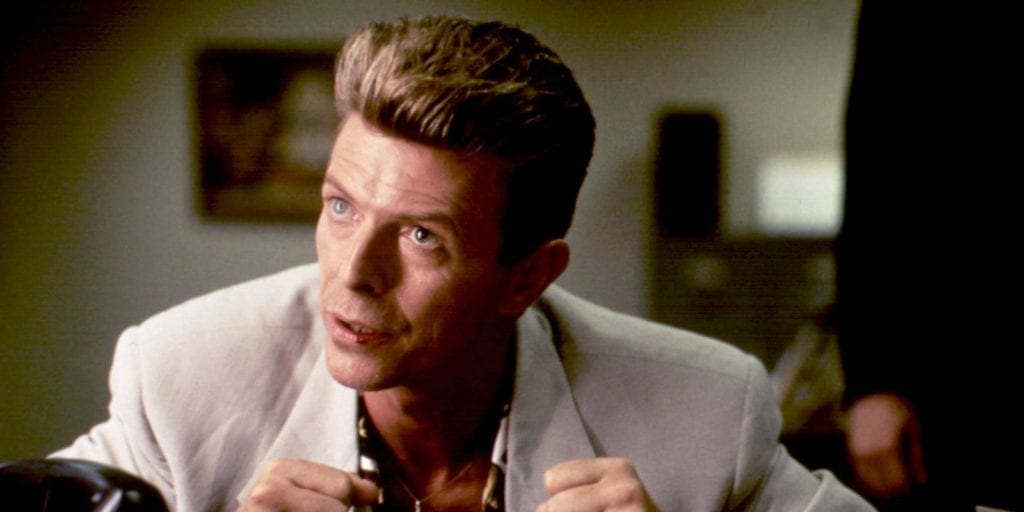
Finally, Jeffries disappears one more time. Front desk claims that the man had never been there. They also get a message from Deer Meadow: Agent Desmond is missing. Cooper follows that trail to the trailer park. The Chelfonts’ trailer is no longer there. Agent Desmond’s car is nearby, with the words LET’S ROCK written on the windshield. It is crystal clear to us viewers that the dwellers of the Black Lodge were heavily involved.
Cooper talks to Diane as he records his findings. He acknowledges Teresa Banks’ murder as one of Gordon Cole’s “Blue Rose” cases, detailing that all clues have led to dead ends. However, the piece of paper beneath the victim’s fingernail leads Cooper to believe that the killer will strike again. So ends the film’s suspenseful first act. The very presence of Dale Cooper at the end introduces a heartfelt tone of conviction onto the narrative. It’s a fitting prologue to the events that will unfold within months.
One Year Later: The Harrowing Final Week of Laura Palmer
The shift is like night and day, though which is truly darker, none can say. The series’ main theme plays welcomingly as we arrive at Twin Peaks once more. And the first thing we see? Laura Palmer, alive. Although we know much of what goes on in her life, it feels strangely comforting to see ordinary life unfolding as she walks with her best friend, Donna (this time portrayed by Moira Kelly) on the way to school. Alas, the glamour fades soon as she walks to the bathroom to get a cocaine fix. It’s clear that she is the middle of an unrelenting storm. Her secret encounters with James ring with fatalism on her part, thinking herself too far gone to save. James, on the other hand, is all about love, love and love, because he’s James.
Those interactions are rather sweet, as opposed to her very public relationship with Bobby. Even an accusation of infidelity on his part becomes just air when Laura gets him to calm down. As per Lynch’s style, even Laura’s graceful smile carries an edge of manipulation. Knowing what we do now, about how she had him sell drugs, the moment is an early step into the darkness. Nevertheless, in spite of James and Bobby, her truest relationship is with her best friend, Donna. Yet despite the fondness, she can’t tell her all that torments her. She has another friend for that end, Harold Smith. Laura quickly goes to him upon finding that somebody had been tearing pages from her diary.
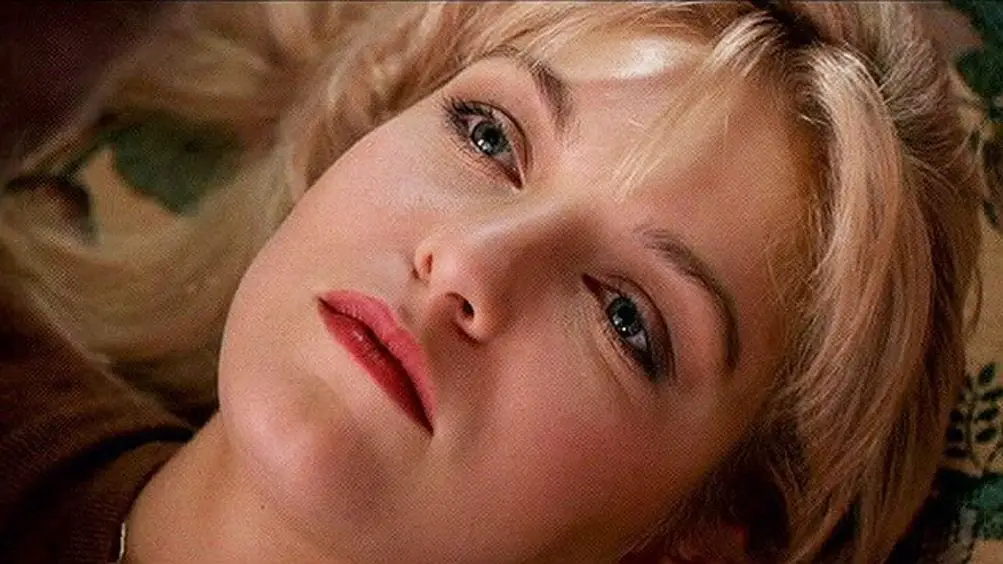
In just a few moments, we’ve seen Laura convey both ease and anguish. However, when telling Harold about BOB, there is nothing but fear and loathing in her face and voice.
In the series, Harold may have appeared naïve, or blindly committed to Laura’s wishes despite common sense. Now, seeing Laura under the hold of that terror, briefly transformed, his reluctance to surrender the diary is understandable. Laura decides to leave her secret diary in Harold’s hands. She proceeds to kiss him, first tenderly and then passionately, but stops before going further. She gives him a sorrowful farewell, aware that she may not see Harold ever again.
Later on, she meets Mrs. Tremond and her grandson. Their intentions are unknown, and they give Laura a painting, along with cryptic words that could be construed as a warning. Although strange, this moment is mild in comparison to the true monstrous den: her very own house. The ambience is thick with prolonged, quiet foreboding leading to several scares. The moments resound with terrible unease.
But the true horror is every interaction Laura has with her father, Leland. These moments literally feel as menacing as Jack Torrance and his family in Stanley Kubrick’s adaptation of The Shining. Even if we didn’t know that BOB is truly Leland, these father-daughter moments feel like she was in peril. Still, Leland’s subconscious sorrow and guilt manage to shine through on occasion as well.
Thus, the only respite we can ever reap from the Palmer household is the benefit of the doubt. When Leland tries to convey his love towards his daughter, the effect is absolutely tragic. BOB’s ‘possession’ of Leland to rape his daughter has snuffed out all the richness to Leland’s fatherly love. The claustrophobic camerawork makes the house into a prison. Essentially, Laura, Sarah, and Palmer are all prisoners to a stagnancy of misery. When BOB allows Leland to be himself, he is dangling the key in front of them, far from their reach. Such moments of warmth will then carry a rueful edge when Laura starts suspecting her father.
Friends Beyond Dreams and Time
Who can really know Mrs. Tremond’s and her grandson’s intentions? Or those of any dwellers on the other side, for that matter? What we can piece together for this occasion is that they’re not on BOB’s side. The painting they gave Laura functions as a conduit in dreams to the Waiting Room. Here we get Cooper warning Laura to not take the ring – Teresa Banks’ ring, that is. As Laura wakes up, she finds Annie Blackburn’s bloodied body next to her. She tells her to write on her diary that the good Dale is trapped in the lodge. Laura then finds the ring in the palm of her hand. All of this is a dream, of course. She has no rings in her possession, but she has knowledge, which will come in handy eventually.

The series has made it pretty obvious: dreams are important. They can function as an existential plane proper. But the knowledge gained in these places, in the Waiting Room, appears to transcend linear time. Cooper himself had experienced it early in the first season. To this day we don’t really know the meaning of these time-subverting messages.
However, for Laura, the meaning is entirely clear. Dale Cooper is evidently looking out for her, retroactively. Through Annie’s words, we can extrapolate that the events of the second season finale have already ‘occurred’. Loads of paradoxes can stem from this. Instead, let’s go simple. In what way is Dale Cooper trying to help her if she already died, or is bound to die? What good is it to write about something unrelated to her death?
Could it be that there is more at stake than life and death? In a series where the soul is no mere affectation, there may be a moral dimension to Laura’s problem. But rather than taking a puritan stance and judge her through her actions rather than her reasons, the series and film take a different, more esoteric approach. In spite of vicious characters like Leo, the concepts of good and evil don’t really belong in the world of humans. Actually, humans are sometimes treated as playthings of beings that do act in evil ways. Leland is a most clear example, and he’s beyond saving. Perhaps, Laura can be saved, after a fashion, in spite of her impending fate.
The occasional Judeo-Christian imagery and parallels are just a way of conveyance. The true polarity of good and evil takes on several tones and flavors in Twin Peaks. Nonetheless, while she lives and after she dies, Laura has allies in Coop and the Log Lady. The two act as figurative guardian angels. Cooper is a literal one even, considering he had delivered a message. It’s all a matter of whether or not Laura will know to heed it.
The Plunge
Even if Lynch would mostly avoid the blatant preachy tone, one thing is very clear in this universe. Drugs are bad, and alcohol is not for kids. It’s when Bobby discusses some shady drug business with Leo and Jacques Renault that we open the door into the dark. Laura is on the verge of crossing it, one night at the Bang Bang Bar. The Log Lady’s warning before entering, and Julee Cruise’s performance on stage make for a clash of tones. The place is very obviously a sleazefest, yet Julee’s singing imbues true sorrow into the atmosphere. This resonates with Laura, considering that she has nothing but sorrow. The contrast between the dark surroundings and the inner pain accelerate when Donna follows her into these places.
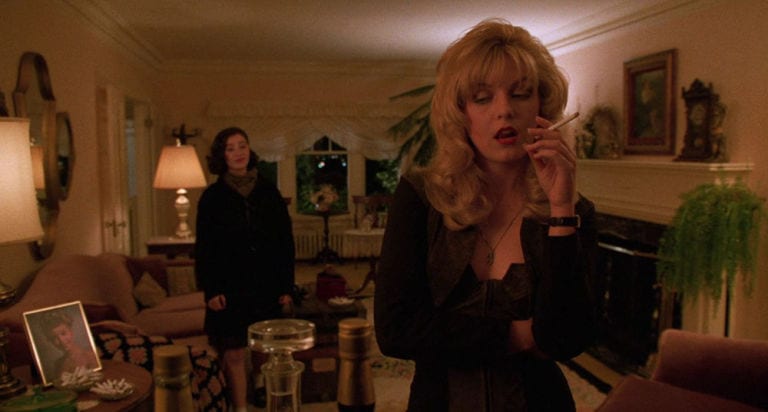
Several developments ensue from that night onward. Laura’s inner conflict arises out of fear that Donna could follow her steps, thus ‘corrupting’ herself. She also learns from Ronette Pulaski that Teresa Banks is dead and that she was attempting to blackmail somebody. These two things are the ‘earthly’ ingredients to set the stage for an ominous disclosure. The rest is composed by a few strange events, starting with Phillip Gerard (MIKE) shouting madly at them in broad daylight.
In this particular scene, MIKE shows Laura the ring she saw in her dream and points accusingly at her father. After the scene, Leland recalls sleeping with and killing Teresa, and seeing individuals from the Black Lodge. He also starts seeing visions of sexualized scenarios involving his daughter.
This effectively bridges the gaps in a territory the viewer already knew by now. Alas, this doesn’t make the gradual disclosure any less grueling. As events Cooper pieced together in the series happen before our eyes, Laura’s behavior appears increasingly wild. This leads to the full reveal through Laura’s perspective that her father is BOB (as he graphically rapes her). This sets off a chain of events full of despair, leading to her final night. Amidst it all, there’s room for only one anguished farewell in the presence of James. It’s not only a farewell to him, but to life itself. As her beautiful and sorrowful theme plays, she walks into the woods to her final destination. Jacques’ cabin.
The Murder and the Aftermath Ethereal
Laura’s not alone as she walks into the unhallowed woods, and she may be aware of it. In truth, Leland followed his daughter throughout the night. The events then unfold precisely as Cooper and the Bookhouse Boys had unveiled. Leo and Jacques spend the night with Laura and Ronette. Yet, the crucial moment is now to come. Possessed, Leland stealthily brings the orgy to a halt after knocking out Jacques. Laura and Ronette remain in the cabin, tied and vulnerable to BOB’s taking. This we know from watching the series, but there’s another factor in the equation. MIKE runs after them through the woods, all the way to the train yard.
With the girls tied and helpless, BOB’s true intent is revealed. He doesn’t probably just mean to rape them—he means to possess Laura. Unadulterated horror permeates the scene, only to be given a brief respite in the form of an angel showing up before Ronette. This strange divine intervention results in Ronette being unbound. She opens the train car’s door upon hearing MIKE, allowing a small opportunity for him to drop his ring into the car. Laura then wears the ring, thus preventing BOB from possessing her. In monstrous anger, BOB kills Laura while Leland screams, begging BOB not to make him do this. The choir sings in tragedy as the deed comes to a loathsome end.
Laura Palmer is dead. Her body is wrapped in plastic and carried towards the lake. BOB enters the Black Lodge, meeting with MIKE and the Man from Another Place. They await his arrival, or rather what he carries. Garmonbozia, sustenance based from pain and sorrow. And BOB has a rich share of it, from the pain and sorrow he has caused Leland and those around him.
The tragedy that has stirred the whole of a community is thus just a scheme for vile beings to get their fill of ‘creamed corn’. Those who live beyond the flesh can be callous, indeed. Meanwhile, Laura’s smartly-dressed spirit is somewhere else in the Lodge, with Cooper at her side. The Special Agent looks on her with compassion, laying a hand on her shoulder. Her angel shows up in front of her with rapturous flashes.
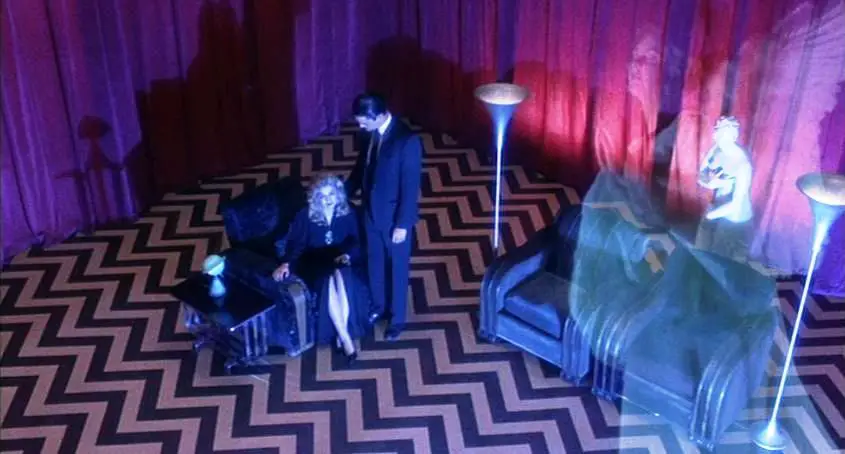
Perhaps the Christian imagery is laying it a bit thick by now. David Lynch does have a reputation of making last minute decisions into filming. However, rather than feeling forced, this tone of salvation is fitting for the story. If a plate of creamed corn is a comprehensible physical manifestation of pain and suffering, an angel may be for respite and redemption. As with every bit of imagery, we could extend this piece further to analyze all the motifs we’ve seen. But it’s not the time to, nor is it necessary. Hidden meanings go under in favor of sheer catharsis. Now, perhaps for the first time, Laura smiles, tearfully and genuinely. She is free now from all her suffering.
I’ll See You Again in 25 Years
So we’ve come to the end of our retrospective on the second half of Twin Peaks. And we have ended right where we started. We have uncovered the mystery behind Laura’s murder and we find ourselves at the threshold of expectations. Rather than neatly answering every question, the film sought to expose the most pressing matter. In the process, “Fire Walk With Me” has posed new unanswered questions to arouse our curiosity. The original run-time of the film is over three hours long, and versions abound ranging from one hour and a half, to a little over two hours. In spite of the diverse cuts and deleted scenes, we came to the same conclusion. Laura Palmer, and the series, ended redeemed.
There might still be some debate on the latter. It took a while for the collective critique to see this film in a kinder light. While it may never be seen as the equivalent of Joss Whedon’s Serenity, especially in terms of total resolution, it’s certainly not the piece of rubbish many called it in its day. I’d dare say a viewer with no knowledge on the series can easily appreciate the film for its prowess in ambience, performance and technique.
Beyond execution, the film did an even greater service. Even if the truth that haunted us has come to full disclosure, that’s only the tip of the iceberg. What lay below the waters, beyond the red curtains is so much darker and incomprehensible as of yet. Cliffhangers are amusing, but there is enough of a visible outline to see a resolution wanting to unfold.
It certainly took effort and negotiation to make it happen, with David Lynch at the wheel. But Season 3 is coming soon, with Angelo Badalamenti at Lynch’s side and a massive cast. For many, it’s a dream come true.
Now, the words from Laura’s spirit in Cooper’s dreams come back to haunt us. Even in embryonic form, the series had cast a narrative into a future unknown. Now that we have walked through the fire, seen the turns and resolutions, we can see that sometimes, a brilliant mind can make a throwaway idea acquire such vital importance.
25 years have passed since the series ended, and the third season was announced. 25 years have passed since this film, and now the continuation awaits at our shores. The theme has become reality, but our expectations are without form. What will happen come May 21st? Yours truly awaits in the dark, with a cup of coffee burning my hand, a cigarette in my lips and a donut on a napkin. We can say no more but…
“It is happening again”.
